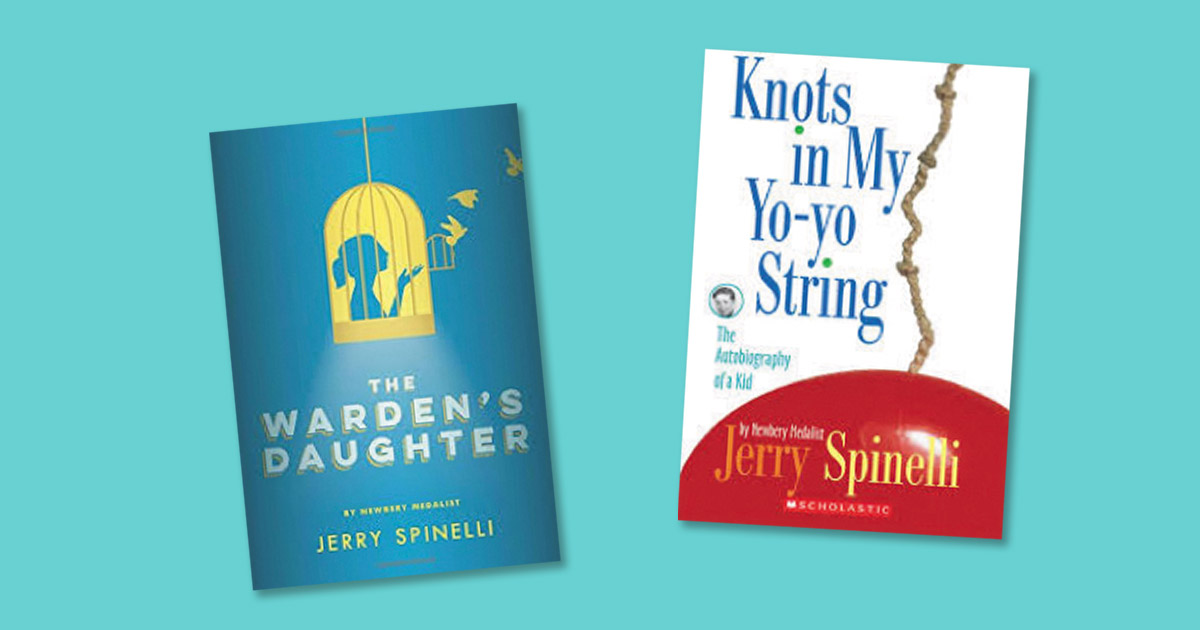Each month, I spotlight two books guaranteed to delight readers and provide fun activities to further extend the meaning of each reading experience. With so many wonderful titles available, this is no easy task! I bring a 34-year teaching career, literacy expertise, and a passion for creating joyful readers to every column I write. I certainly hope you enjoy this month’s picks as much as I do.
GROWING UP
“It takes courage to grow up and become who you really are.” ~ e.e.cummings
According to psychologist Peter Gray, Ph.D. (Free to Learn, 2013), children are biologically designed to pay attention to the other children in their lives as they grow up, to try to fit in with them, to be able to do what they do, and to know what they know. When the majority of a child’s time is spent with other children, it is easy to understand the reason clothing, hobbies, sports, taste in music, language, and many other things often mimic those of friends. It is also easy to
appreciate the weight friends’ words of affirmation and hurtful comments have on a child’s self-esteem. Unlike children in previous generations, Dr. Gray states that today’s children are more frequently under adult supervision in and outside of school, spend more time alone with technological “gadgets” (television included), and are less likely to play outdoors with neighborhood children. Just forty years ago, growing up meant staying outdoors until it got dark, riding bikes, climbing trees, playing on the backyard swing set, and endless games of hopscotch. Children today would likely find many of the everyday experiences that comprised their parents’ childhood hard to believe.
Childhood Then and Now:
- CAR:
- Then: Used hands to work a car—pull up a lock to open the door; turn a crank to open the window; use a key to open the trunk, etc.
- Now: Push a button (or use voice activation) for everything to work in the car: unlocking/locking, raising/lowering windows; opening the trunk, adjusting the radio, etc.
- SEATBELT:
- Then: Seatbelts were optional. It was possible to sit in the middle of the front seat or sleep on the ledge along the back windshield.
- Now: Safety restraints for drivers and children from birth to 16; car seats (rear-facing and front-facing), booster seats, and seatbelts.
- TELEVISION:
- Then: Most families had one television with 13 channels, and turning the knob on the set was required to change the channels and volume; adjusting the foil-covered rabbit ears that sat on top of the set improved the reception.
- Now: Multiple screens in a home with hundreds/thousands of channels that can be accessed with a remote control (or voice activated system).
- MUSIC:
- Then: Listening to music required the needle to be carefully placed on the record (vinyl discs that came in different sizes) and the sound came from huge speakers connected by wires to the record player.
- Now: Plentiful options are available—computers, voice-controlled, cloud-based devices (e.g., Echo), smartphones, stereo systems that play CDs, DVDs, blue rays, etc.
- PHONE:
- Then: Answering the phone was the only way to know who was calling. The phone was connected to the handset/receiver by a 6-foot coiled cord; phone numbers were looked up in the phone book—residential in the White Pages and businesses in the Yellow Pages.
- Now: Caller ID, special ringtones, pop-ups on television, etc., announce callers. Most people have cell phones; the majority are smartphones with unlimited data, talk, and text. With one click, any phone number can be accessed and dialed.
THE WARDEN’S DAUGHTER
Newbery Medalist Jerry Spinelli (Maniac Magee, Stargirl) shares the story of loss, kindness, and redemption of Cammie O’Reilly, a spirited twelve-year-old girl who lives in an apartment above the entrance to the Pennsylvania Hancock County Prison with her father, the warden. While Cammie is free to come and go, she remains locked inside a prison of sadness, and anger over the tragic death of her mother when Cammie was just a baby. She longs for a mother and searches among a colorful cast of female inmates—a flashy shoplifter, a reformed arsonist housekeeper, and a newly incarcerated child killer. An unexpected sacrifice by one of the inmates enables Cammie finally to break free from the bitter grief she has held on to for a lifetime. Written in Cammie’s voice as a grandmother looking back on the events of 1959, it serves as a poignant reminder that even when we do not get exactly what we want, we often get exactly what we need.
KNOTS IN MY YO-YO STRING: THE AUTOBIOGRAPHY OF A KID
This early autobiography of Spinelli’s memories of his many “firsts”—first kiss, first punch, first trip to the principal’s office, first sports faux pas, first loss of a family pet, and other universal “firsts” is told in a way that tweens and adults alike can relate to. This highly engaging and humorous memoir of an ordinary boy from Norristown, Pennsylvania in the 1950s can easily be the personal narrative of many (now) sixty-somethings. In addition to entertaining readers with reflections on his childhood, Spinelli also documents the beginnings of his life as an author. “No writer guides his young characters past these pitfalls and challenges and toward their futures with more compassion.” (The New York Times).
“You can’t pick out the pieces you like and leave the rest. Being part of the whole thing, that’s the blessing.” ~ Natalie Babbit (Tuck Everlasting)
EXTENSION ACTIVITIES:
Multimodal Autobiography of “Firsts”
Spinelli peppered his childhood memoir, Knots in My Yo-yo String, with black-and-white photographs from his past. In like fashion, write an autobiography which incorporates five significant “firsts” in your life. Then, select images from online sources (or sketch/paint/create your own, scan, and upload them to your desktop) and music with lyrics that powerfully represent these events. Using PowerPoint or some other presentation tool, compose a multimodal autobiography to share with your family and friends.
Game (Re)Inventor
The yo-yo, spotlighted in the title of Spinelli’s autobiography, is just one of the many popular toys of the 1950s. While some toys have stood the test of time and remain favorites with children of the 21st century (e.g., Mr. Potato Head, Easy Bake Oven, and Matchbox cars) others have gone by the wayside. Your assignment: Pretend you have been asked by a major toy company to breathe new life into a board game that, while once highly popular, has been off the market for decades. Research one of the following (former) board games and reconfigure, repurpose, create new rules of play, redesign, give the box a facelift, etc., to make it appealing to children today.
- Cootie
- Pirate and Traveler
- Square Mile
- Easy Money
- Concentration




















